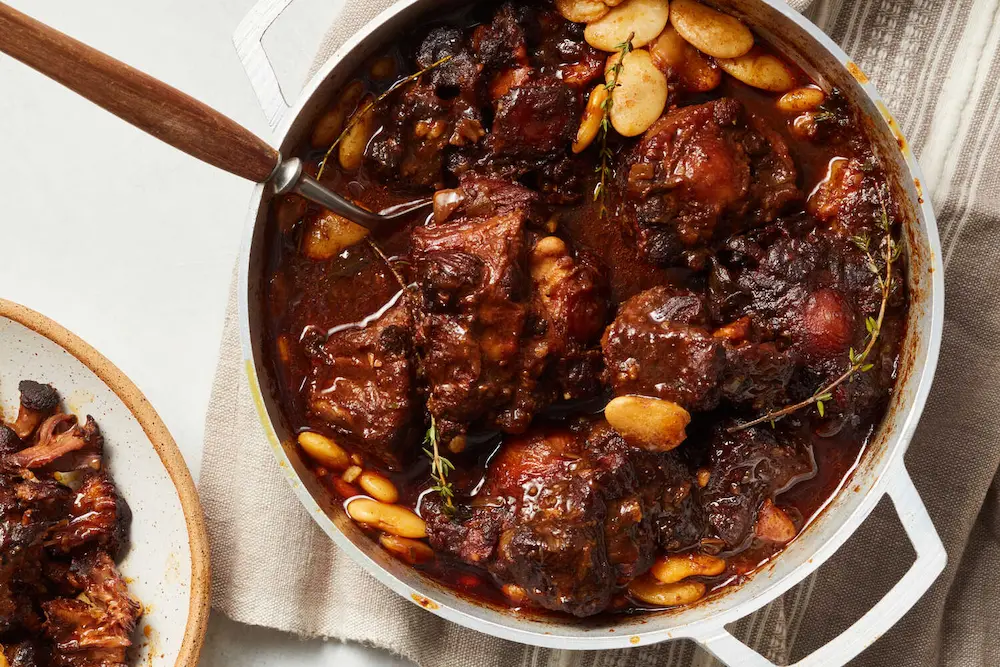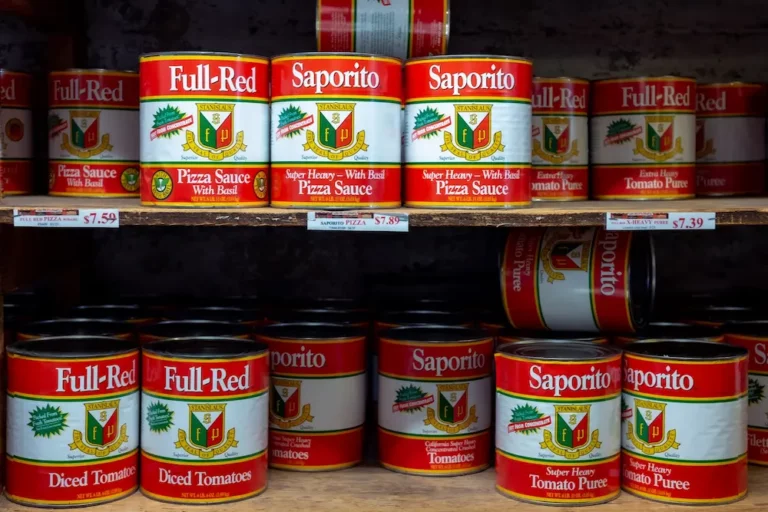Is Oxtail Healthy? Find Out the Nutritional Benefits and Risks
As someone who is health-conscious, I’m always on the lookout for nutritious and tasty foods to add to my diet. Recently, I’ve been hearing a lot of buzz about oxtail and its potential health benefits. But is it really a healthy choice? In this article, I’ll explore the nutritional value of oxtail and whether it deserves a place in a healthy diet.
Oxtail is a cut of beef that comes from the tail of a cow. It’s a tough, bony cut that requires long, slow cooking to become tender and flavorful. While some people may be put off by its appearance, others rave about its rich, beefy flavor and the gelatinous texture that comes from the bone marrow and connective tissue. But is oxtail healthy? In this article, I’ll take a closer look at its nutritional value and potential health benefits.
What is Oxtail?
Oxtail is the culinary term used for the tail of a cow or veal. It is a gelatinous, bony, and fatty meat cut that is often used in stews and soups. Oxtail is a versatile meat that can be prepared in various ways, including braising, roasting, grilling, and boiling.
Despite its name, oxtail does not come from an ox. In the past, oxen were used for labor and were not commonly consumed for meat. Today, oxtail comes from beef cattle or veal of both genders.
Oxtail is a popular ingredient in many cuisines worldwide, including Jamaican, Korean, Chinese, and European. It is a flavorful and nutritious meat cut that can be used to add depth and richness to a dish.
When cooked correctly, oxtail can be incredibly tender and flavorful. It contains a high amount of collagen, which gives it a gelatinous texture when cooked low and slow. Oxtail is also rich in essential nutrients such as protein, iron, and vitamins B12 and B6.
In summary, oxtail is a flavorful and versatile meat cut that can be used in various recipes. It is a nutritious meat that contains essential nutrients and can be prepared in different ways to suit different tastes and preferences.
Nutritional Value of Oxtail
Oxtail is a delicious and flavorful meat that is rich in essential nutrients. In this section, I will discuss the nutritional value of oxtail and its macronutrient and micronutrient content.
Calories and Macronutrients
One serving of oxtail (approximately 100 grams) contains about 296 calories. The macronutrient content of oxtail is as follows:
- Protein: 35 grams
- Fat: 16 grams
- Carbohydrates: 0 grams
Oxtail is a high-fat meat, so it is important to be mindful of portion sizes when consuming it. However, it is also a good source of protein, which is essential for building and repairing muscle tissue.
Vitamins and Minerals
Oxtail is a rich source of essential vitamins and minerals, including:
- Iron: Oxtail is an excellent source of iron, which is important for the production of red blood cells and the prevention of anemia.
- Vitamin B12: Oxtail is also a good source of vitamin B12, which is important for maintaining healthy nerve cells and red blood cells.
- Zinc: Oxtail contains zinc, which is important for immune function and wound healing.
- Phosphorus: Oxtail is a good source of phosphorus, which is important for bone health.
Protein Content
Oxtail is a great source of high-quality protein, which is essential for building and repairing muscle tissue. One serving of oxtail contains about 35 grams of protein, making it an excellent choice for athletes and anyone looking to increase their protein intake.
Overall, oxtail is a nutritious and delicious meat that is rich in essential nutrients. However, due to its high-fat content, it is important to consume it in moderation as part of a balanced diet.
Health Benefits of Oxtail
Oxtail may not be the most popular cut of meat, but it is packed with nutrients that offer numerous health benefits. Here are some of the health benefits of oxtail:
Bone Health
Oxtail is rich in collagen, which is essential for maintaining healthy bones. Collagen is a protein that makes up a significant portion of bone tissue. As we age, our bodies produce less collagen, which can lead to weaker bones and joints. Consuming collagen-rich foods like oxtail can help to support bone health and prevent conditions like osteoporosis.
Immune System Support
Oxtail contains a range of vitamins and minerals that are essential for supporting a healthy immune system. It is particularly high in zinc, which plays a crucial role in immune function. Zinc is essential for the development and function of immune cells, and a deficiency can lead to an increased risk of infections.
Promotes Weight Management
Despite being a rich and flavorful meat, oxtail is relatively low in calories compared to other cuts of beef. It is also high in protein, which can help to promote feelings of fullness and reduce cravings. Consuming protein-rich foods like oxtail can help to support weight management goals by reducing overall calorie intake.
In conclusion, oxtail is a nutrient-dense meat that offers several health benefits. It is rich in collagen, zinc, and protein, which can support bone health, immune function, and weight management. Incorporating oxtail into your diet can be a delicious and healthy way to support your overall health and wellbeing.
Potential Health Risks
High in Fat
Oxtail is a flavorful cut of meat that comes with a downside: it is high in fat. A 3-ounce serving of oxtail contains approximately 8 grams of fat, which is about 12% of the recommended daily intake. The high fat content in oxtail can contribute to weight gain, high cholesterol levels, and an increased risk of heart disease.
However, not all fats are created equal. Oxtail contains a good amount of healthy fats, such as monounsaturated and polyunsaturated fats, which can help lower bad cholesterol levels and reduce the risk of heart disease. But, it is still important to consume oxtail in moderation and balance it with other healthy foods.
High Sodium Levels
Another potential health risk of consuming oxtail is its high sodium content. A 3-ounce serving of oxtail contains approximately 71 milligrams of sodium, which is about 3% of the recommended daily intake. However, many oxtail recipes call for added salt, which can significantly increase the sodium content.
High sodium intake can lead to high blood pressure, which is a major risk factor for heart disease, stroke, and kidney disease. To reduce the sodium content in oxtail dishes, try using low-sodium broth or seasoning with herbs and spices instead of salt.
In conclusion, while oxtail can be a delicious addition to your diet, it is important to consume it in moderation and balance it with other healthy foods. Be mindful of its high fat and sodium content and make adjustments to your cooking methods to reduce these potential health risks.
How to Include Oxtail in a Healthy Diet
When it comes to incorporating oxtail into a healthy diet, there are a few things to keep in mind. Oxtail is a flavorful and nutritious cut of meat that can be enjoyed in moderation as part of a balanced diet. Here are some tips for including oxtail in your healthy meal plan.
Cooking Methods
Oxtail can be prepared using a variety of cooking methods, including braising, stewing, and slow cooking. These methods help to tenderize the meat and release its rich flavor. When cooking oxtail, it is important to trim off any excess fat to reduce the overall calorie and fat content of the dish. You can also use lower calorie and lower fat ingredients, such as vegetables and herbs, to add flavor and nutrition to your oxtail dishes.
Portion Control
While oxtail can be a healthy addition to your diet, it is important to practice portion control. Oxtail is a rich and flavorful meat, so it is easy to overindulge. A serving size of oxtail is typically around 4 to 6 ounces, depending on your individual calorie needs. You can also pair your oxtail with a variety of healthy sides, such as roasted vegetables or a side salad, to add fiber and nutrients to your meal.
In summary, oxtail can be a delicious and nutritious addition to your healthy diet when enjoyed in moderation and prepared using healthy cooking methods. By practicing portion control and pairing your oxtail with healthy sides, you can enjoy the rich flavor and nutritional benefits of this unique cut of meat.
Conclusion
In conclusion, oxtail is a nutritious and healthy meat choice that can provide several benefits to your diet. It is a great source of protein, iron, and vitamin B12, which are essential nutrients for maintaining good health. Oxtail also contains bone marrow and connective fats that can provide additional health benefits.
While oxtail may be considered a delicacy and can be more expensive than other meat choices, it is worth the cost for the nutritional value it provides. Oxtail can be used in a variety of recipes, from soups and stews to grilled or roasted dishes.
It is important to note that oxtail should be consumed in moderation, as with any other meat. It is high in calories and saturated fat, so it should not be the main source of protein in your diet. Incorporating oxtail into a balanced meal plan with plenty of fruits and vegetables can help you reap its health benefits while maintaining a healthy diet.
Overall, oxtail is a delicious and nutritious meat choice that can provide several health benefits. It is important to enjoy it in moderation and in combination with other healthy foods to maintain a balanced diet.







